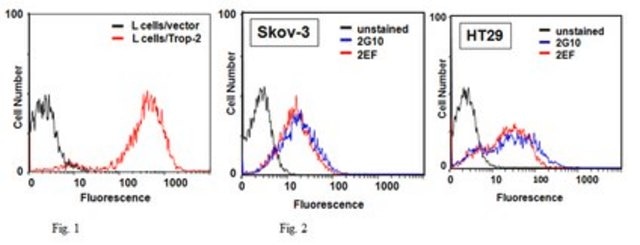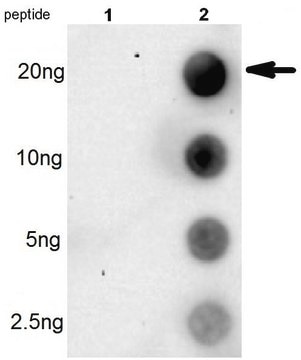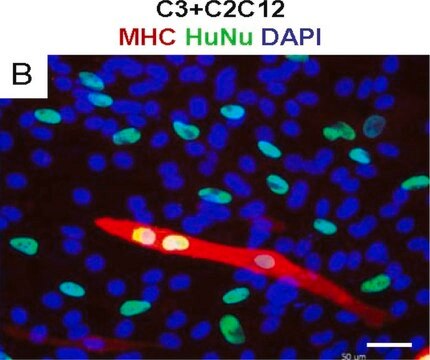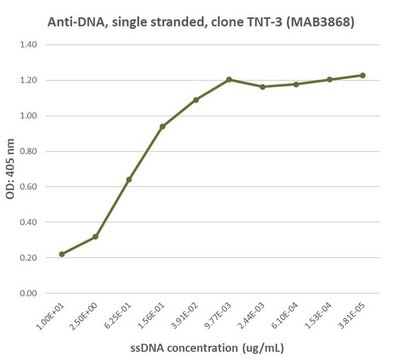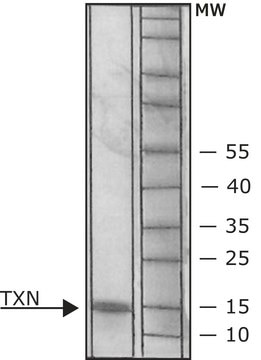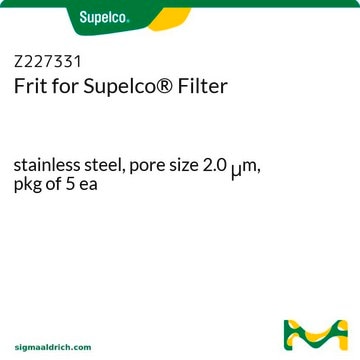General description
Histone H3.1t (UniProt: Q16695; also known as H3/t, H3t, H3/g) is encoded by the HIST3H3 (also known as H3FT) gene (Gene ID: 8290) in human. Histones are highly conserved basic nuclear proteins that are responsible for the nucleosome structure of chromatin in eukaryotes. They play a central role in transcription regulation, DNA repair, DNA replication and chromosomal stability. DNA accessibility is regulated via a complex set of post-translational modifications of histones, also called histone code, and nucleosome remodeling. Two molecules of each of the four core histones (H2A, H2B, H3, and H4) form an octamer, around which DNA is wrapped in repeating units, called nucleosomes, which limits DNA accessibility to the cellular machineries that require DNA as a template. Histone H3 features a main globular domain and a long N-terminal tail, which protrudes from the globular nucleosome core and can undergo several different types of epigenetic modifications that influence cellular processes. The amino-terminal tails of histone proteins are subject to posttranslational modifications, including acetylation and methylation, which recruit downstream regulatory factors, influence chromatin structure, and are critical determinants of transcription. Acetylation of histone H3 occurs at several different lysine positions in the histone tail and is performed by a family histone acetyltransferases. Acetylation is generally associated with transcriptional activity and methylation of lysine and arginine residues can either activate or repress depending on the residue modified. There is a significant correlation between acetylation of histones H3 in promoter regions and transcriptional activity. The presence of H3K4me3 has been correlated with transcriptionally active promoters of genes and its levels positively correlate with gene expression levels. H3K4me3 has been implicated in a number of nuclear processes, including Pol II-mediated transcription, pre-mRNA splicing, DNA recombination, and DNA repair. Histaminylation of glutamine 5 on histone H3 (H3Q5Histaminyl) is recently identified as a permissive post-translational modification that coexists with adjacent lysine 4 trimethylation. (Ref.: Zhao, S., et al. (2021). Proc. Natl. Acad. Sci. USA. 118(6):e2016742118; Diehl , KL., and Muir, TW. (2020). Nat. Chem. Biol. 16; 620-629; Bernstein, BE., et al. (2002). Proc. Natl. Acad. Sci. USA. 99(13);8695-8700).
Specificity
This rabbit polyclonal antibody specifically detects Histone H3.1 with trimethylated lysine 4 and histaminylated glutamine 5.
Immunogen
KLH-conjugated linear peptide corresponding to 10 amino acids from the N-terminal region of human Histone H3.1 with trimethylated lysine 4 and histaminylated glutamine 5.
Application
Quality Control Testing
Evaluated by DOT Blot analysis with K3K4me3Q5Histaminyl peptide.
Dot Blot Analysis: A 1:1,000 dilution of this antibody detected H3K4me3Q5Histaminyl peptide, but not the unmodified H3Q5 peptide.
Tested Applications
Western Blotting Analysis: A 1:2,000 dilution from a representative lot detected Histone H3.1 trimethylated on lysine 4 and histaminylated on glutamine 5 (H3K4me3Q5Histaminyl) in RN46A, KU812, SK-N-SH & HEK293T whole cell lysates. (Data courtesy of Dr. Ian Maze s Lab, Icahn School of Medicine at Mount Sinai, New York).
Note: Actual optimal working dilutions must be determined by end user as specimens, and experimental conditions may vary with the end user
Anti-H3K4me3Q5histaminyl, Cat. No. ABE2605, is a rabbit polyclonal antibody that detects Histone H3.1 trimethylated on lysine 4 and histaminylated on glutamine 5 and is tested for use in Dot Blot and Western Blotting.
Physical form
Purified rabbit polyclonal antibody in buffer containing 0.1 M Tris-Glycine (pH 7.4), 150 mM NaCl with 0.05% sodium azide
Storage and Stability
Recommended storage: +2°C to +8°C.
Other Notes
Concentration: Please refer to the Certificate of Analysis for the lot-specific concentration.
Disclaimer
Unless otherwise stated in our catalog or other company documentation accompanying the product(s), our products are intended for research use only and are not to be used for any other purpose, which includes but is not limited to, unauthorized commercial uses, in vitro diagnostic uses, ex vivo or in vivo therapeutic uses or any type of consumption or application to humans or animals.

